Some weeks back, I shared several intriguing discoveries when revisiting the 1985 Conservators Report on Bagnowka Jewish Cemetery in Bialystok, Poland. I was surprised to learn that the original main entrance on Ul. Wschodnia also had an adjoining small ‘people’ entrance. I was even more surprised that this report reaffirmed what my early visits to Bagnowka and neighborhood lore suggested – this cemetery was destroyed post-World War II amidst the new Polish Communism not by the Nazis during WWII.
There are more exciting discoveries within the Conservators Report related to: additional entrances and cemetery boundaries; self-seeding vegetation; statistics on burials; burials before the cemetery was opened; and, one of the most surprising, the revelation that the Memorial Pillar is NOT in its original location!
Cemetery Boundaries and Entrances
The Conservators report notes that along Bagnowka’s western border, until about 1949, was ul. Cmentarna (Cemetery Street), which separated the Jewish and Roman Catholic cemeteries. They – technically there are three conservators who contributed to this report, posit that along this wall there (most likely) was an entrance, given the size of the cemetery. The recently acquired WWII Luftwaffe Aerials support this proposition. Indeed, near the northern end of Ul. Cmentarna, the 1944 aerial best depicts an opening in the wall. This additional entrance also explains the peculiar burial patterns in this area: absence of any burials in the sections adjoining this opening, adjoining sections with burials from the first decades of this cemetery’s use, including burials of Cohanim, ‘priests’. Given the distance to what was presumably the main entrance on ul. Wschodnia, these early burials and cohanic burials have been troubling. Why bury in such a distant area of the cemetery in the early years? AND priests are typically buried near the entrance. A secondary entrance explains these presumed peculiarities.
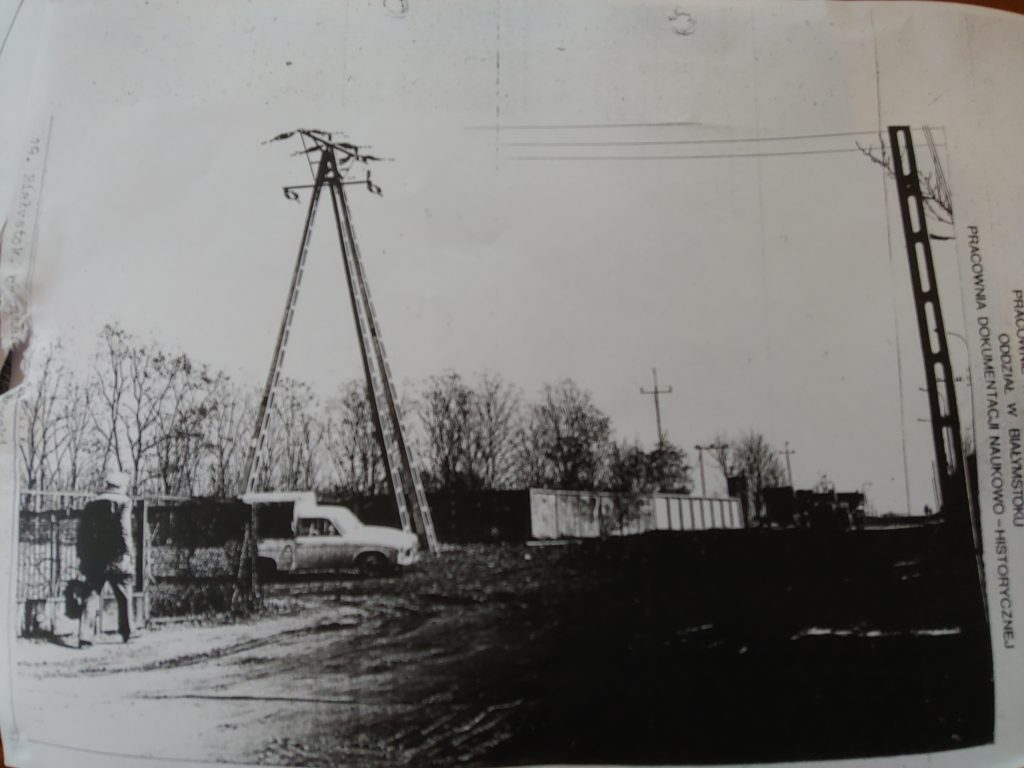
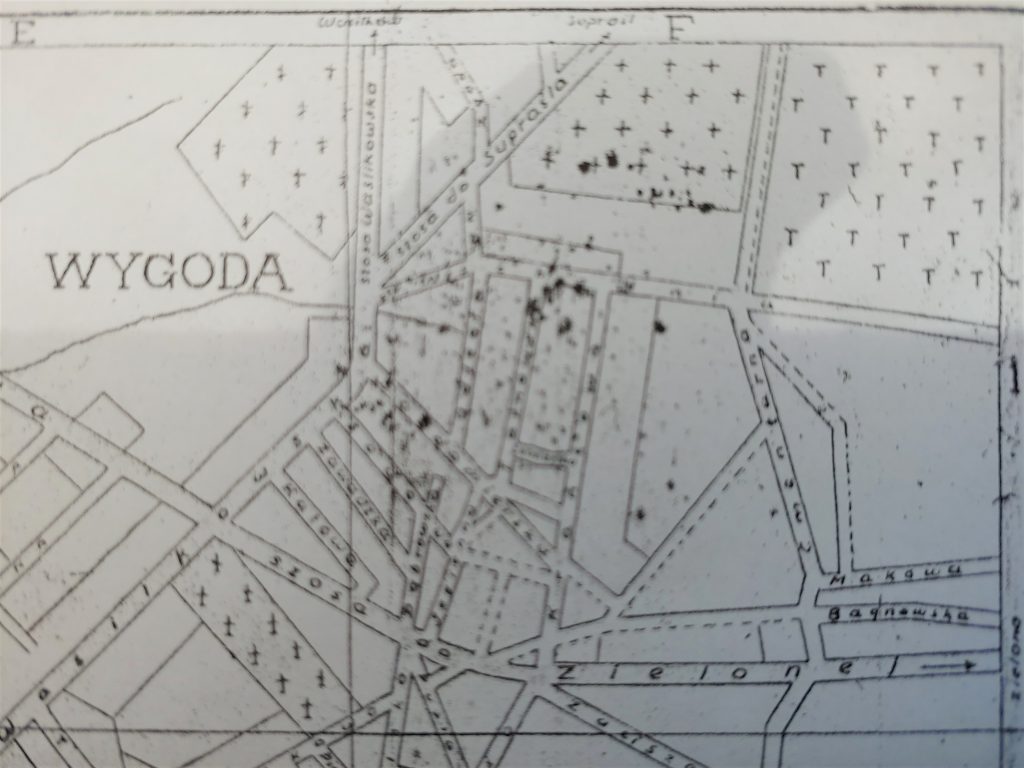
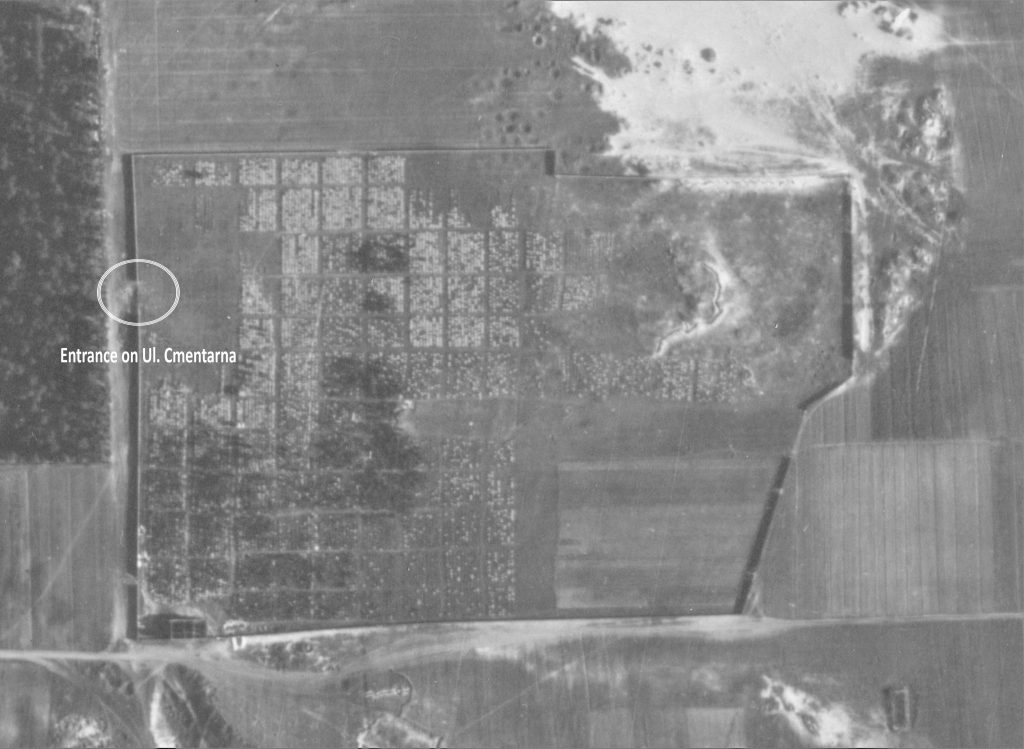
In my 2007 visit to Bagnowka, a photo captures what was then termed a repair to this section of the wall, which once offered a sweeping gap in the wall. That this stretch of wall once held a larger entrance makes perfect sense. Just south of this large repair is also a small ‘repair’ to the western wall, another small people entrance also suggested in the 1944 aerial.
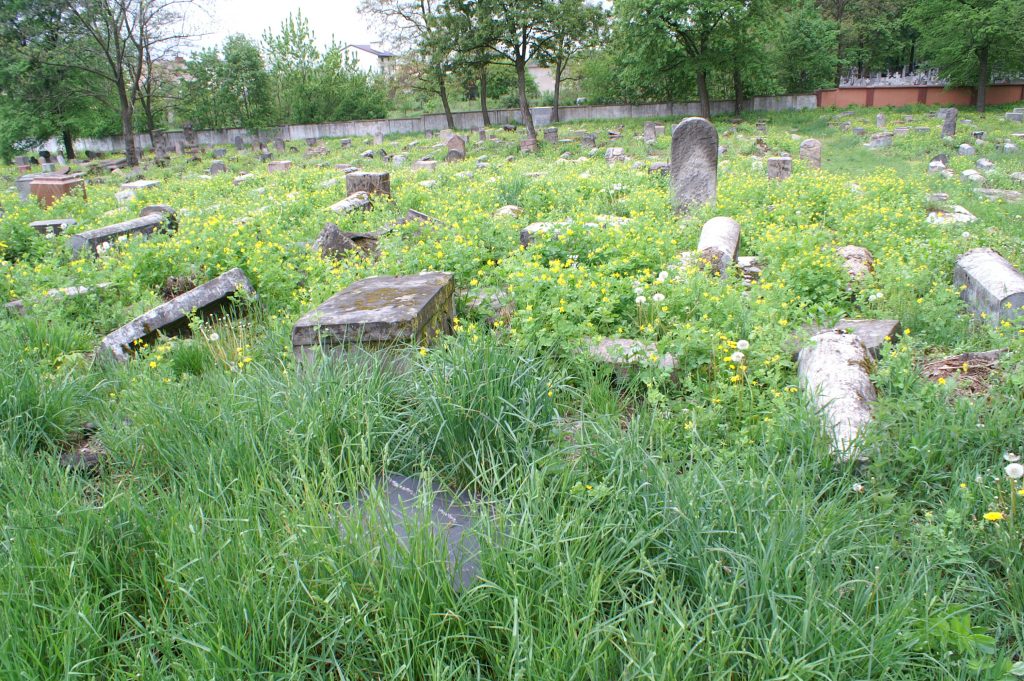
Along the eastern border of today’s cemetery are single-family houses built on what was then reserve land. Along this border, the conservator recommended chain-link fence be placed as opposed to a brick wall. Why? A chain-link fence set into a concrete foundation would emphasize that the current eastern border is not original (33). Also, although this housing is on reserve land, given the disappearance of tombstones, “presumably the matzevot from the eastern part of the cemetery were used as material for foundations of the surrounding houses (17).” Planned restoration in this eastern area of the cemetery will determine the validity of this statement.
In this reserve area is also a hill, built from Jewish tombstones from the other older cemeteries in Bialystok (17,34). Conservators also recommend that this hill also be surrounded by chain-link fencing. It has not been fenced-in to this day.
Vegetation
This report also details the plant cover on this cemetery, noting twelve distinct varietals that are native except for one (Siberian Carragans). The conservator did note that “the cemetery was completely void of trees. The current stand is self-seeding.” (16) Anyone who has seen post-WWII photos of this cemetery and current ones knows just how overgrown this cemetery has become. One final comment offered recommends the removal of “self-seeding and undergrowth from the whole cemetery up to 10cm as well as those that threaten tombstones (34).” Current restoration efforts concur with this recommendation. Further clearing of the young growth forest is under discussion with the local authorities.
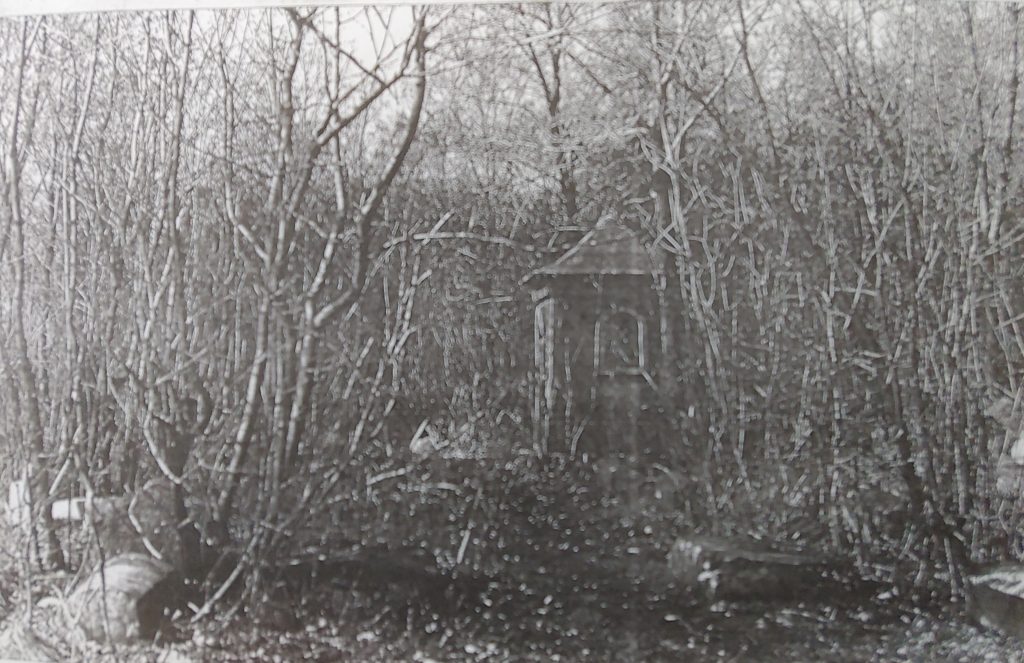
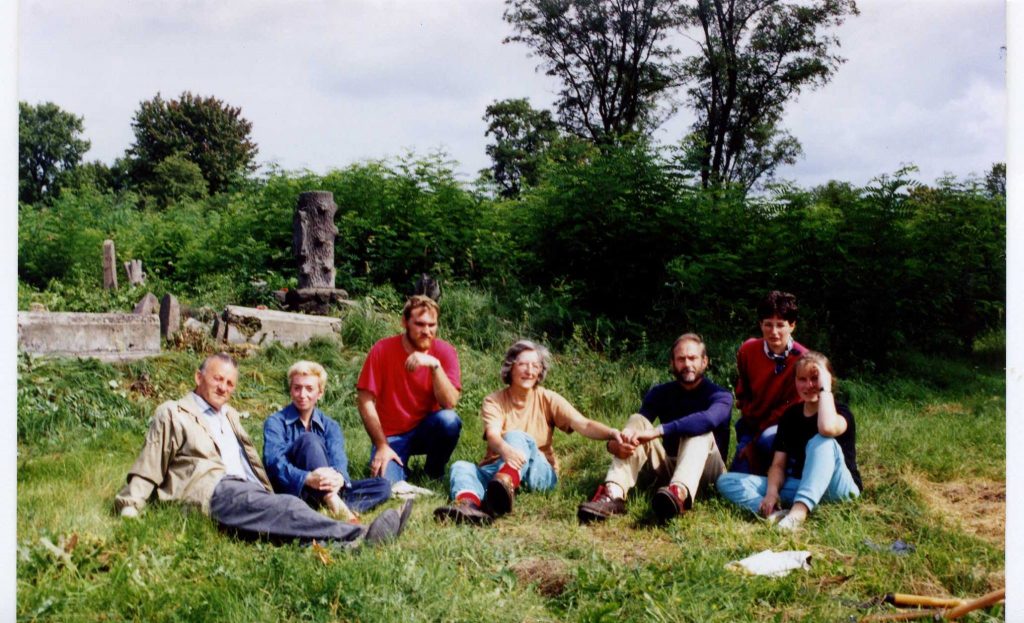
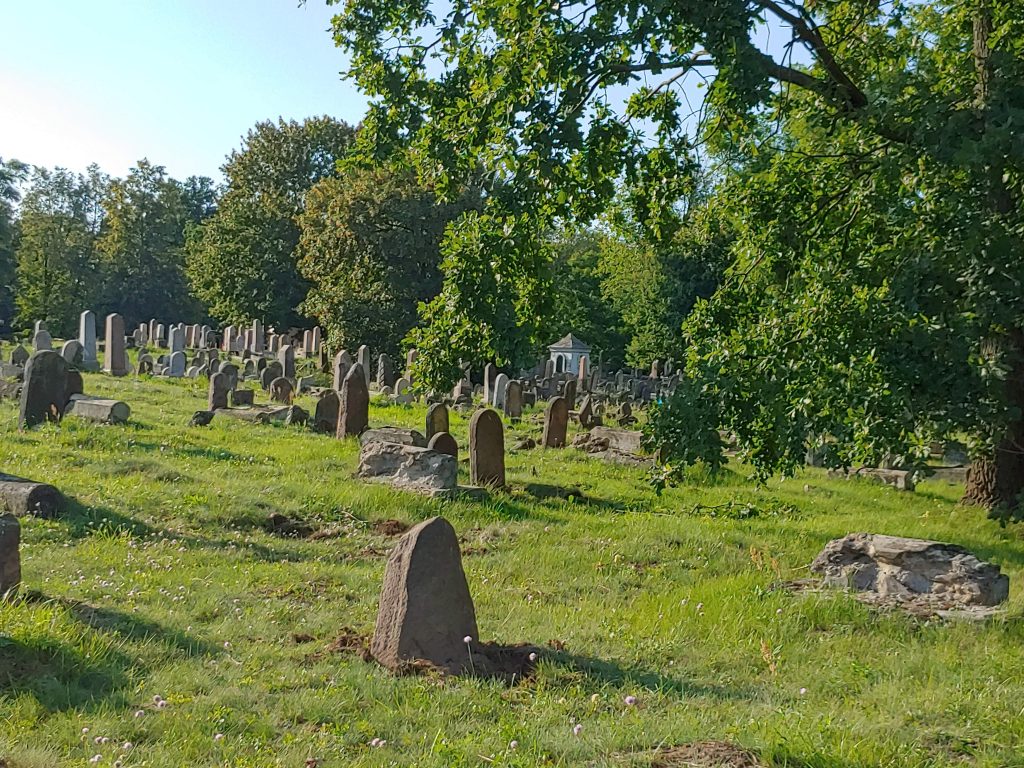
Statistics of Jewish Deaths in Bialystok.
Drawing on data in the Registry Office in Bialystok, the Conservators Report includes a table with the number of Jewish deaths by year from 1890-1942, noting that an average of 500 deaths a year occurred. (These numbers do not always match those offered by H. Frank and S. Blankstein’s Statistics for Bialystok, 1909-1918.) Data for 1941-2 refer to burials on the Ghetto Cemetery. The report also notes 76 sections were functional (13). There are concerns with this data: years are listed without Jewish deaths, yet on Bagnowka there are stones for these years; omitting the years when Bagnowka was not used (1890, 1941, 1942) nearly 27,000 Jewish deaths and presumably burials would have to be accounted for on this cemetery. Of the sections restored fully or partially and documented, most hold c. 150 burials, suggesting a total of c. 15,000 burials on Bagnowka. The 1937 Bagnowka map offers nearly 80 sections, the conservator’s map itself delineates 100 with a few oddities (two large section should be subdivided and the sections adjoining the main entrance held structures) and the 1944 aerial depicts nearly 100 sections with visible stones. In the next season of restoration, walking each section and recounting extant stones, plinths or even burial mounds may assist in clarifying these statistics.
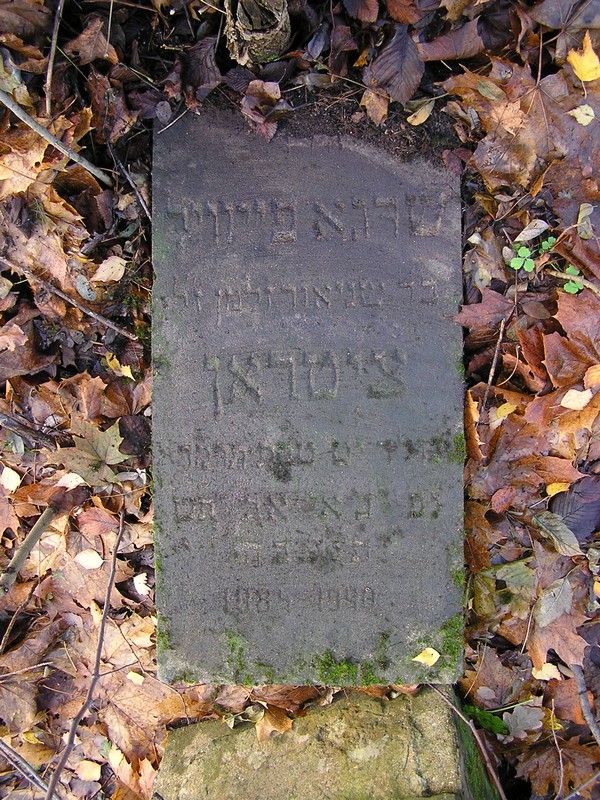
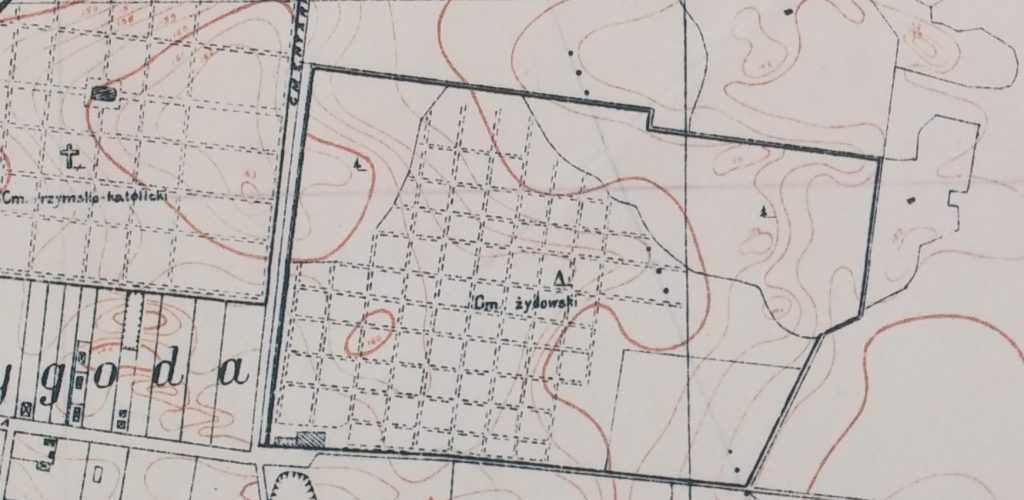
Burials before the cemetery existed?!
As a specialist (and enthusiast) of Bagnowka’s written records, I am ecstatic to finally resolve the mystery of the tombstones purportedly dating to 1874 and 1876. Bagnowka was established in 1892. Bialystok historian A.S. Herszberg reported the cemetery’s founding and dedication on 4 Tevet 5652 were concurrent with the first burial of a woman named Fruma, daughter of Reb Yehuda Lejb, who died two days earlier. Herszberg did not specifically indicate whether he was referencing the Julian (23 Dec 1891) or Gregorian calendar (4 January 1892). The Conservators reference two tombstones with the dates of death 1874 and 1876, acknowledging that the dates are peculiar and well-before the cemetery’s founding. Their explanation is connected with another entry on the exhumation of a soldier, Alfred Simenauer, who died in the WWI battle in the town of Waniewo in 1915 and his reburial on Bagnowka on 12 Nov 1930. (His tombstone was restored in 2014 by the combined efforts of Centrum and ASF under my direction.) There is nothing to suggest exhumation and reburial of these two individuals, however, who purportedly died in 1874 and 1876. Still why would there be such early burials on Bagnowka? There are NO early burials. Rather the Hebrew years of death were misread. Years of death for Ester Rozenthal, daughter of Zeev Wolf, Hacohen (5654 = 1894), and for Rivke, daughter of Manisz Warszawicz (5657 = 1896) were erroneously read as 1874 and 1876, suggesting that the Hebrew letter Nun (50) was either confused with the letter Lamedh (30) or given the wrong numerical equivalent.
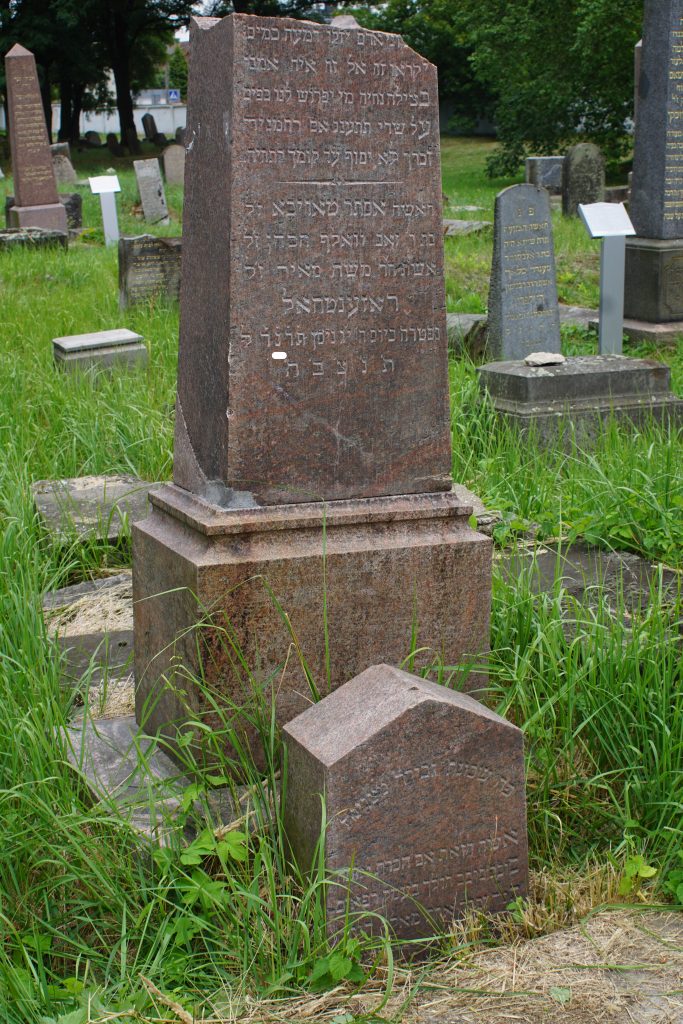
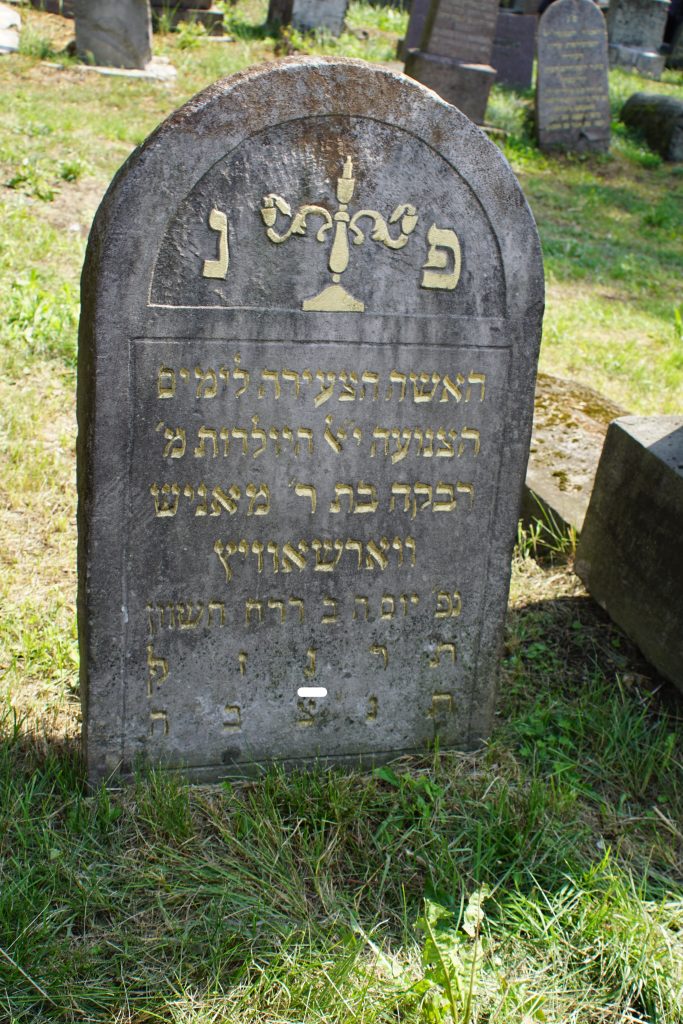
The Original Location of the Memorial Pillar
Equally intriguing is the report’s assertion that the Memorial Pillar that remembers the victims of two 1905 massacres in Bialystok and the horrific 1906 Pogrom is NOT in its original location. I had known that this black granite obelisk was vandalized in 1981 from written and oral records. Broken into three pieces, the upper register band with the words “Valley of Slaughter” (Jer. 7:32; 19:6) on each façade was never restored.
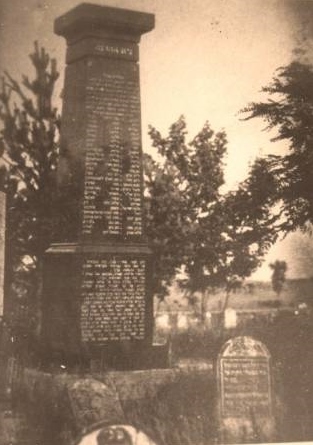
In a rare postcard, now in the William A. Rozenthall Judaica Collection – Postcards (Special Collection: College of Charleston), the original setting has been captured with scores of matzevoth adjacent to the concrete base.
In the 1985 report, the conservators recommend that the pillar should be moved from its current location in the City (Municipal) Cemetery and returned to Bagnowka (34). They also note, however, that given the devastation to its original setting, it should be placed nearer Ul. Wschodnia – perhaps for protection as it would be more visible. Moreover, someone conversant with Hebrew should assist to assure that it is placed correctly. The Bialystok Stimme writes of the 1985 restoration of this Memorial Pillar, funded by the New York Bialystoker Home. Its replacement must have been shortly after this report was released. Clearly, individuals conversant with Hebrew must have assisted in order to place the obelisk in the very section that holds tombstones to the victims of these devastations.
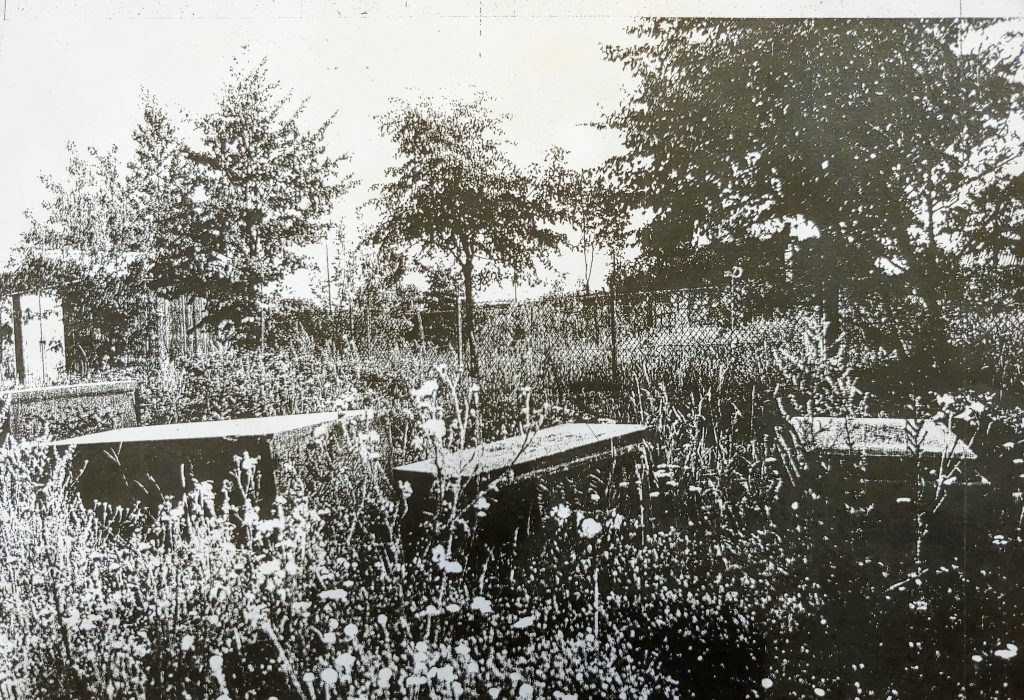
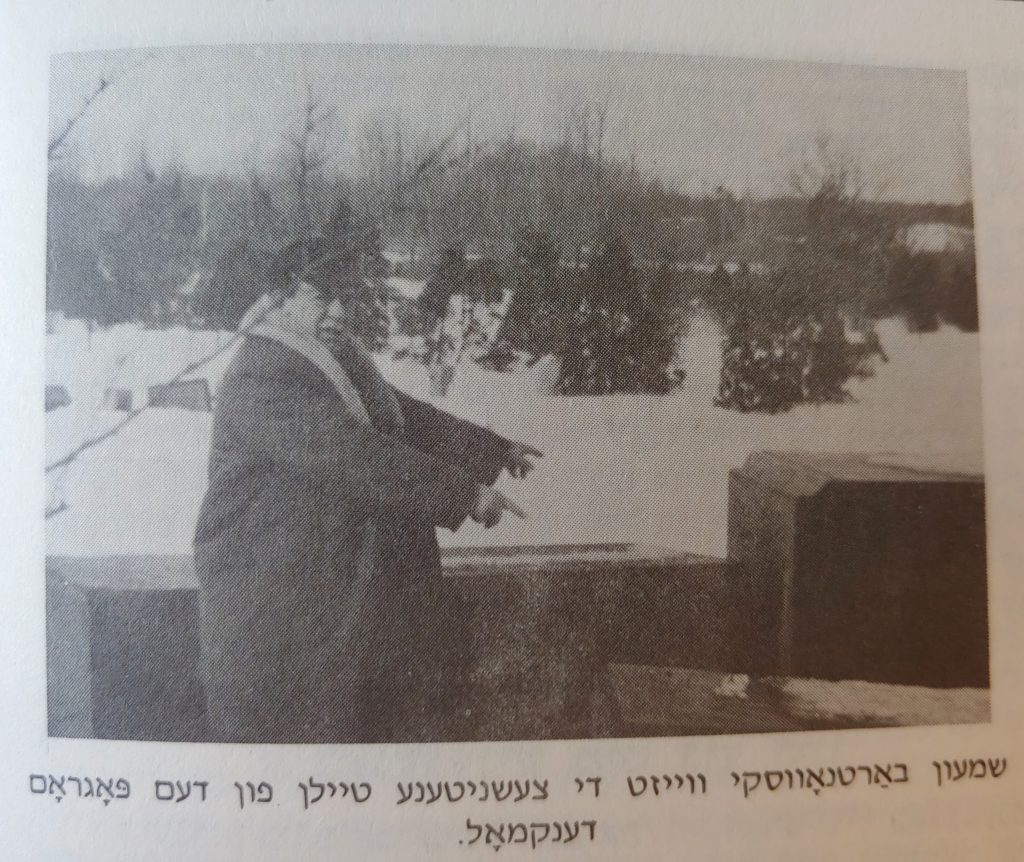
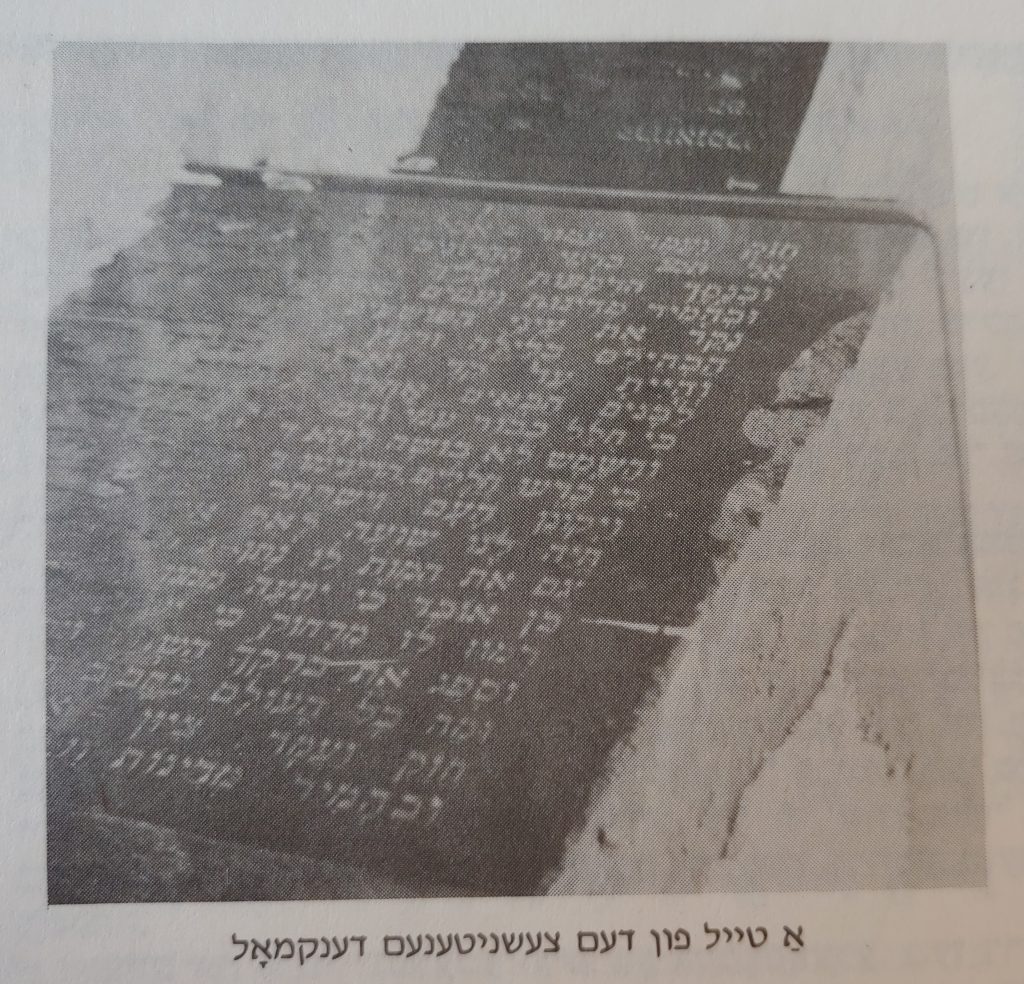
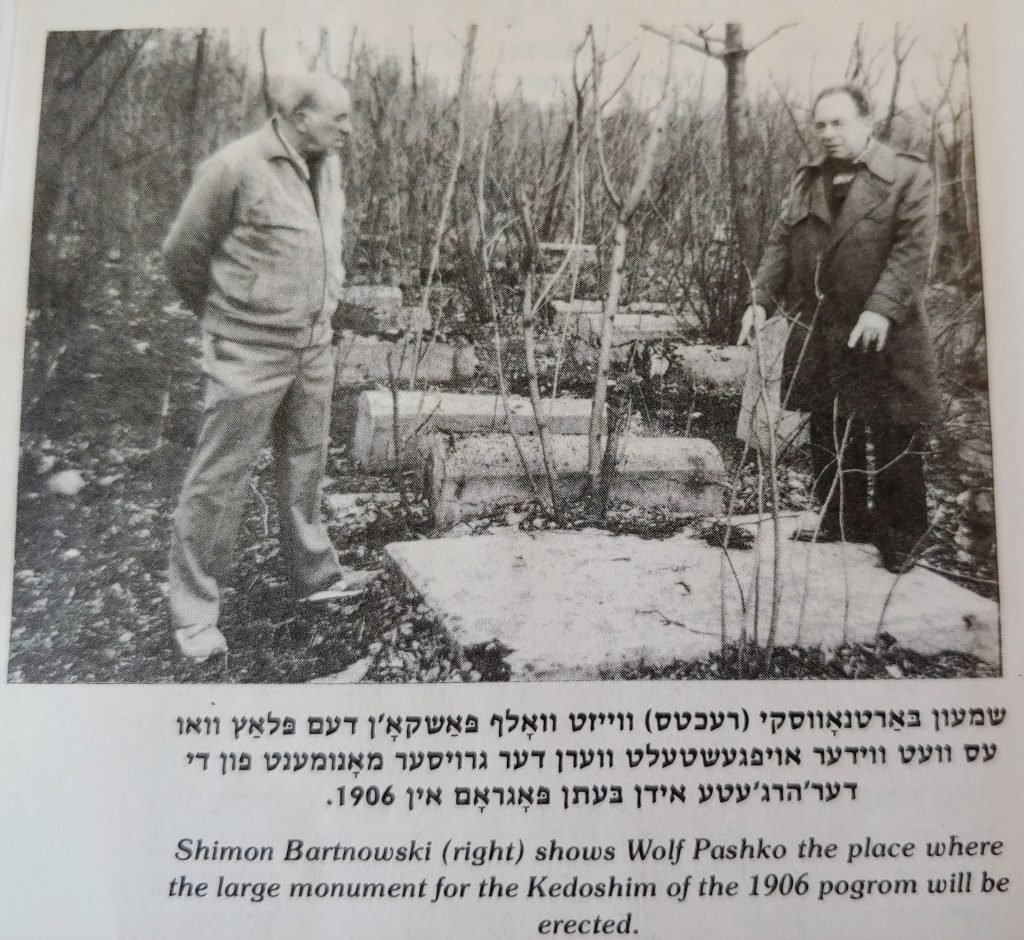
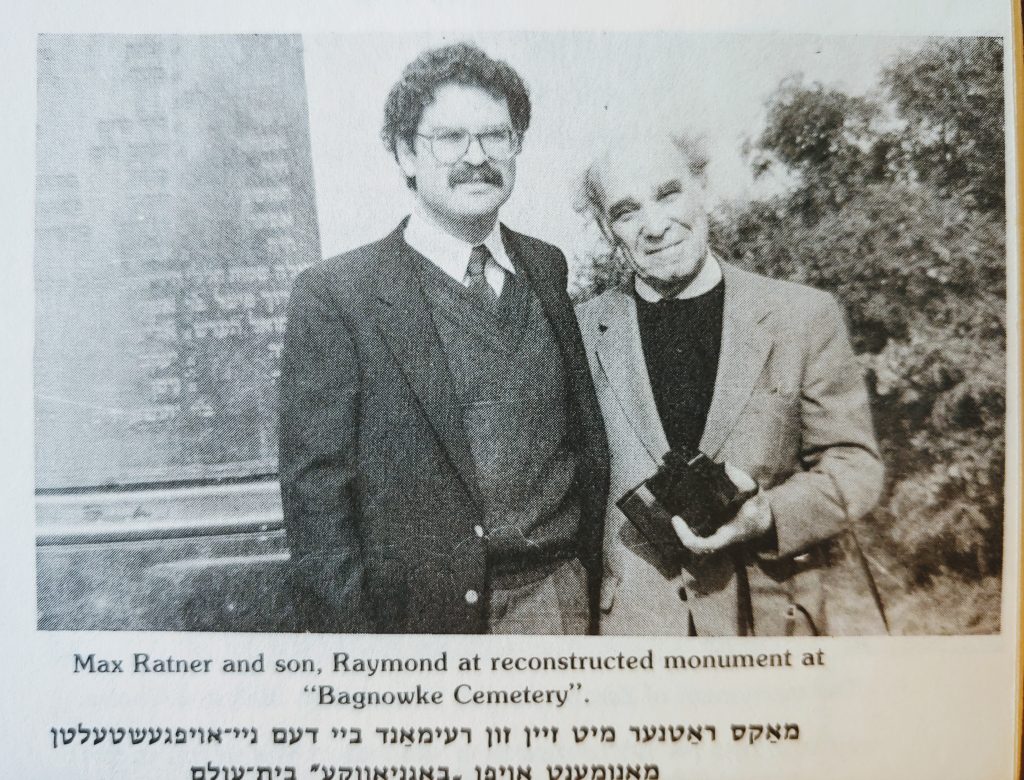
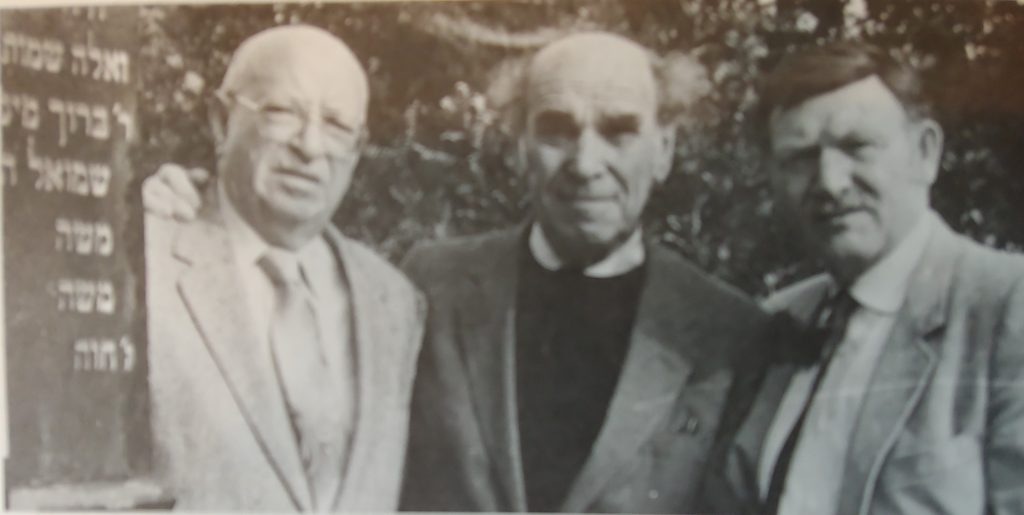
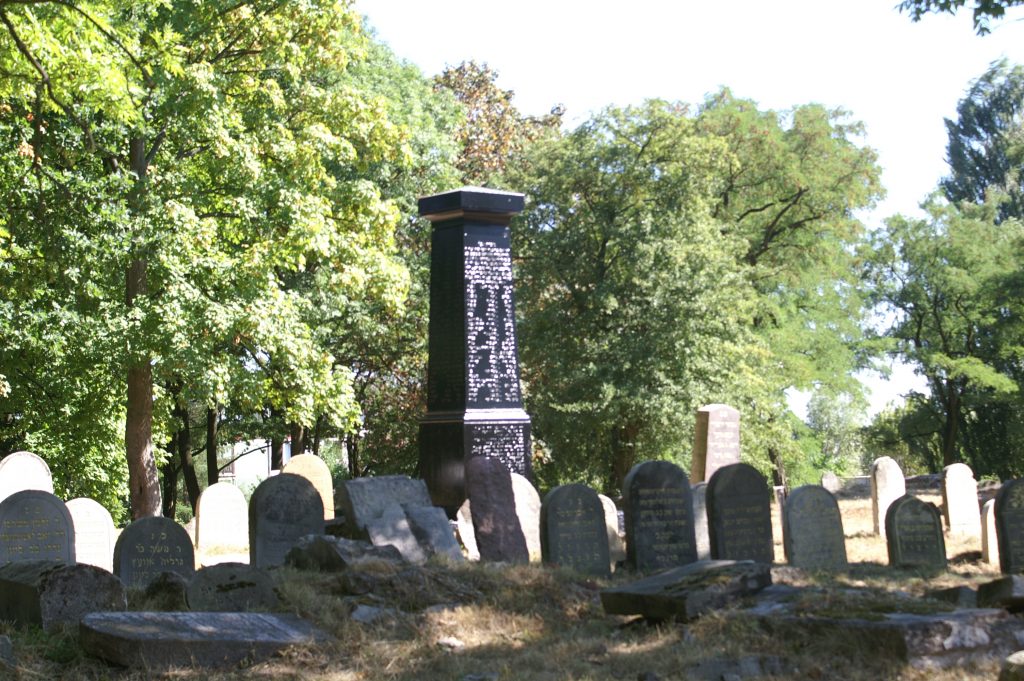
The conservators also recommend that a placard be placed in the stone’s original site, with an explanation of what transpired. The question is: Where was the original location? The recently acquired WWII Luftwaffe Aerials offer an answer! In the 1944 aerial photo, the Memorial Pillar can clearly be seen on the NW edge of Section 53, with a clear pathway to the Memorial from the eastern edge of this section and the cemetery. That section is just one section east and north of the current location. To this day, no restoration or any documentation of this section has occurred, simply because of how massively overgrown this area is.
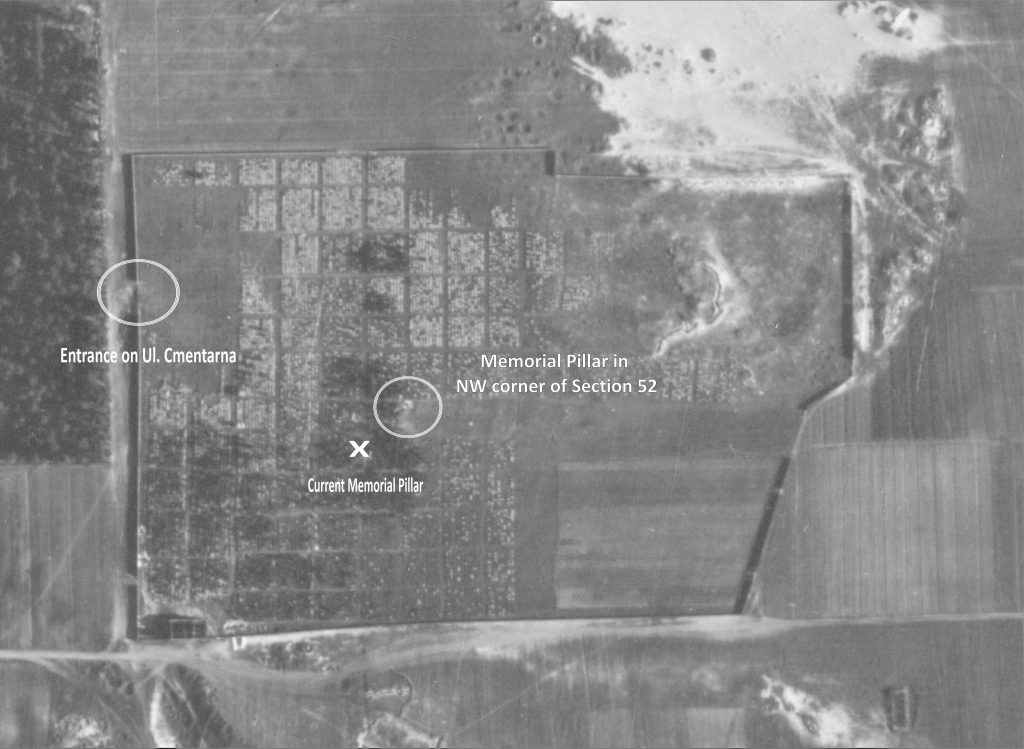
In August 2019, Filip Szczpanski from the Warsaw Rabbinical Commission of Jewish Cemeteries visited Bagnowka and examined the Memorial area. He commented that there is no mass grave beneath the Memorial Pillar. His assertion now makes sense but reveals more questions. Is there a mass grave in the original location? Do the tombstones in the photos of the Memorial in its original location also remember victims of the pogroms? This would make sense as not all victims are remembered in the extant memorial tombstones. And, also, who assisted in its more recent placement, knowing its new contextually appropriate setting amidst a section and adjoining section of memorial tombstones?
When I first began my research on Bagnowka in 2004, my focus was on its epitaphs as a reflection of the now lost world of Jewish Bialystok. It is through that lens that I first read available parts of the Conservators’ Report. Nearly 16 years later, with nearly a decade also involved in the restoration of this cemetery, and with a growing interest in the cemetery-in-total as a reflection of Jewish life, the pieces of the puzzle are coming together. The opportunity to read this report in its entirety is encouraging.
I am encouraged to revisit my previous research on Bagnowka! I am equally encouraged in the restoration progress of Bagnowka Jewish Cemetery and pleased that the strategies employed by the Bialystok Cemetery Restoration Project are in keeping with the recommendations of the insightful conservators, who researched and prepared this report. As they wrote, “the Jewish Cemetery together with its tombstones is the only witness in Bialystok of the existence of a large Jewish Community here.”